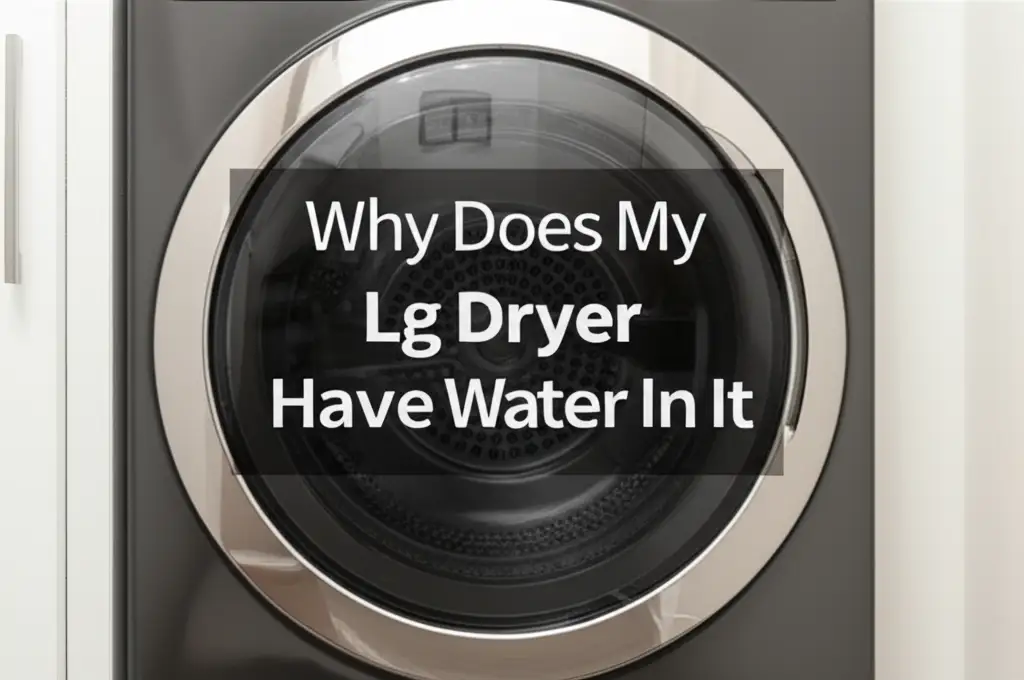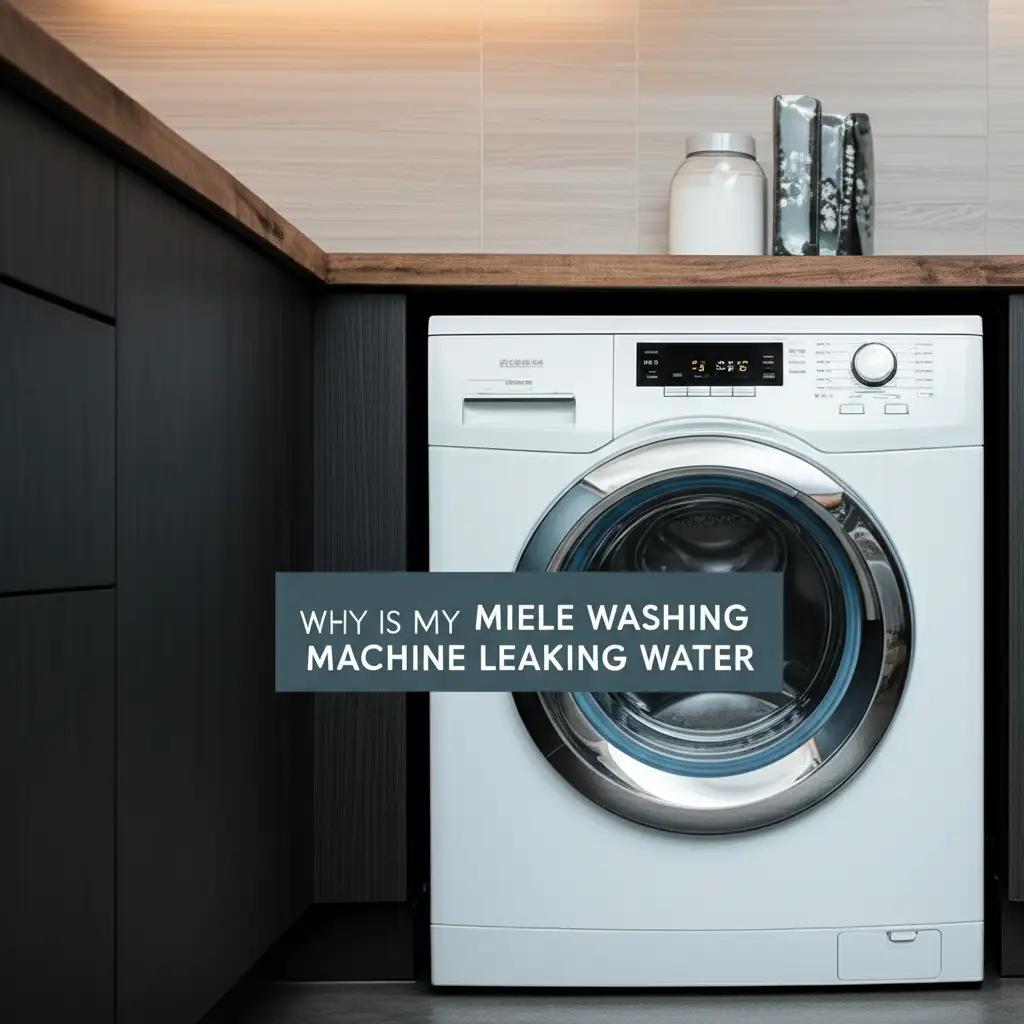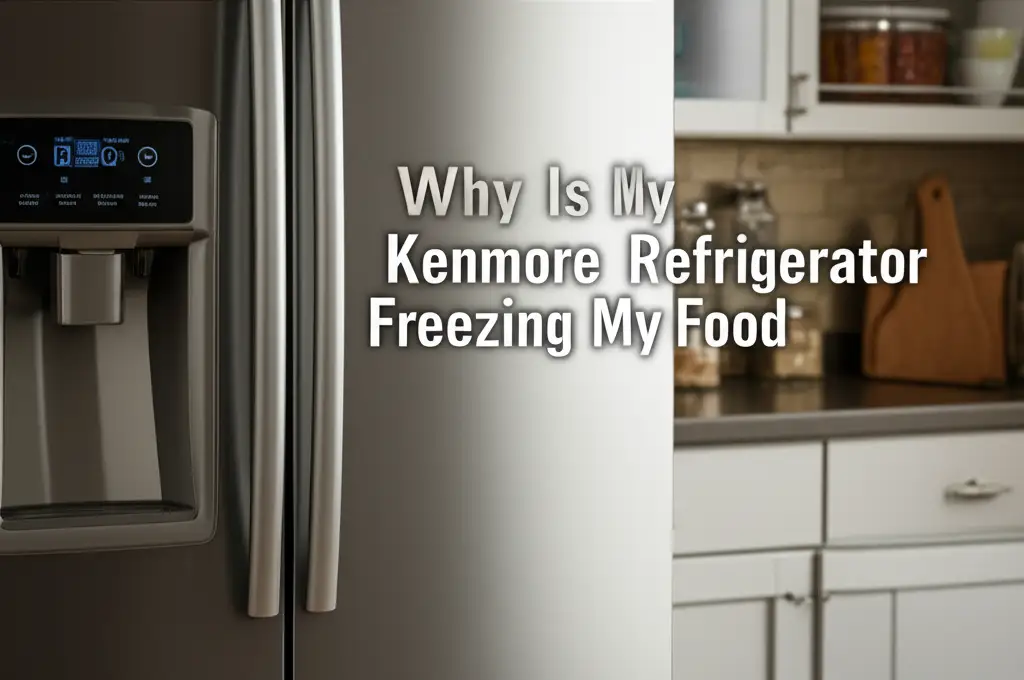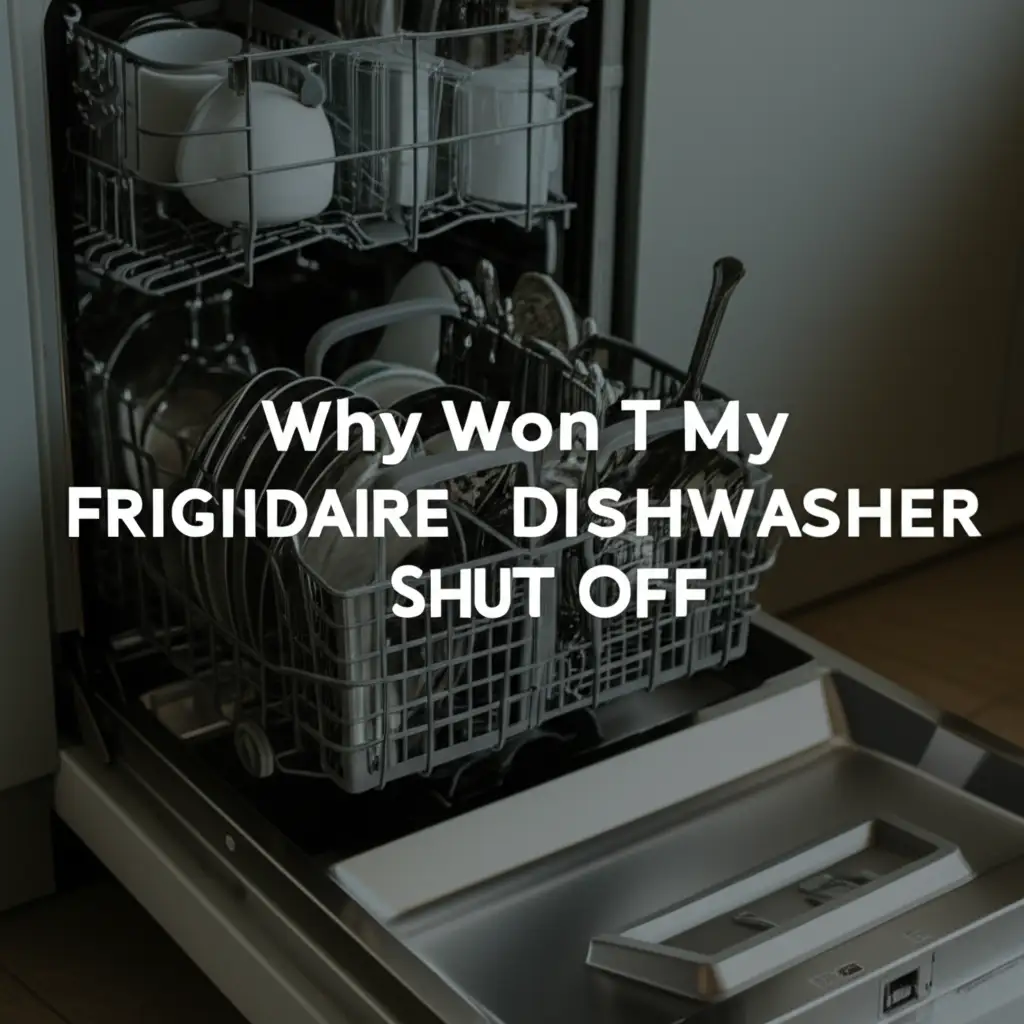· Todd Martin · Appliance Repair · 24 min read
Why Does My Lg Dryer Have Water In It

Why Your LG Dryer Has Water In It: A Comprehensive Guide
Finding water in your LG dryer can be very confusing. Dryers are supposed to remove moisture, not add it. I understand the surprise and frustration you feel when you open your dryer door and find water inside. This common issue stops your laundry routine. It also raises concerns about your appliance’s health. You might wonder, “Why does my LG dryer have water in it?” This guide will help you understand the problem. We will look at many causes for water in your LG dryer. We will also provide clear steps to fix them. You can solve this problem with the right knowledge. You can get your dryer back to proper working order.
Takeaway
- Identify Dryer Type: Determine if your LG dryer is vented or ventless (condenser/heat pump). This affects troubleshooting steps.
- Check Vents/Hoses: Clear all lint traps, exhaust vents (for vented), and drain hoses/water tanks (for ventless).
- Inspect External Sources: Look for leaks from your washing machine or nearby plumbing.
- Confirm Proper Installation: Ensure the dryer is level and hoses are correctly connected.
- Professional Help: Call a technician if the problem persists after basic troubleshooting.
Why does my LG dryer have water in it?
Your LG dryer has water in it primarily due to issues with moisture removal. For vented models, this often means a blocked exhaust vent. For ventless condenser or heat pump models, the problem usually points to a clogged drain hose, a full condensation tank, or a faulty pump. External leaks from the washing machine can also be a source.
Understanding LG Dryer Types and Their Water Issues
LG makes two main types of dryers: vented and ventless. Each type handles moisture differently. Because of this, the reasons for finding water inside them are also different. Knowing your dryer type is the first step in troubleshooting. You need to understand how your specific model works.
Vented LG Dryers: Exhaust System Problems
Vented dryers remove moist air through an exhaust vent. This vent goes outside your home. Air from inside the dryer passes over clothes. It picks up moisture. This moist air then travels through the vent. It leaves your house. If this vent gets blocked, the moist air cannot escape. This trapped moisture condenses back into water inside the dryer drum. This means your clothes stay damp. You might even see puddles.
The main cause of water in a vented LG dryer is a clogged vent. Lint builds up over time in the vent hose. This blockage prevents proper airflow. Airflow issues also make your dryer take longer to dry. Why does my LG dryer take so long to dry is often related to a clogged vent. A crushed or kinked vent hose can also cause problems. It restricts airflow. Check the entire length of the vent hose. Make sure it is straight and clear. Animals can also build nests in the outside vent cap. This creates a blockage. Regular cleaning of your dryer vent is very important. This helps prevent water issues. It also ensures efficient drying.
Ventless LG Dryers: Condensation and Drainage
Ventless dryers do not need an outside vent. They work by condensing moisture. This type includes condenser dryers and heat pump dryers. Instead of expelling moist air, they cool it down. This turns the water vapor back into liquid water. This water then collects in a tank or drains away through a hose.
If you have a ventless LG dryer and find water, the issue relates to this condensation and drainage system. The water collection tank might be full. It might need emptying. The drain hose might be kinked or clogged with lint or debris. The drain pump, which moves water out of the dryer, could also be faulty. These systems are efficient. But they require specific maintenance. Understanding how your ventless dryer manages water is key to fixing any leaks.
Common Causes of Water in Vented LG Dryers
Vented LG dryers rely on a clear path for moist air to escape. If this path is blocked, condensation forms. This leads to water collecting inside the drum or around the door. These issues are generally simpler to diagnose and fix than those in ventless models. However, they can still cause significant problems if ignored. Let’s look at the most common reasons for water in a vented dryer.
Clogged or Blocked Dryer Vent
A clogged dryer vent is a very frequent cause of water accumulation. Lint, pet hair, and other debris build up inside the vent hose over time. This blockage traps moist, hot air within the dryer. As the air cools, the moisture condenses into liquid water. This water then drips into the drum or collects around the dryer’s components. It is not just a problem for water; it is also a fire hazard.
To check your vent, first disconnect the dryer. Then, carefully pull the dryer away from the wall. Inspect the flexible vent hose at the back. Look for kinks or crushing. Disconnect it from both the dryer and the wall. Use a long brush or vacuum cleaner to remove any lint inside. You should also check the outside vent hood. Make sure it is clear of lint, nests, or other obstructions. Cleaning your dryer vent regularly helps prevent this issue. It keeps your dryer working well. For general maintenance, you can also follow steps on how to clean your dryer.
Restricted Airflow from Lint Filter Issues
While most lint filters are inside the dryer door, problems with them can affect airflow. An extremely dirty or blocked lint filter restricts airflow within the dryer. This means air cannot circulate properly to remove moisture from clothes. Instead of being exhausted, the humid air remains trapped. It then condenses back into water inside the dryer drum. You might even find your dryer shows a “clean filter” error. If your LG dryer keeps saying clean filter, it indicates significant airflow restriction.
Always clean your lint filter before every load. Pull out the filter and remove all visible lint. Sometimes, fabric softener residue can build up on the filter screen. This forms a thin, invisible film that also blocks airflow. To check for this, remove the lint filter and hold it under running water. If the water pools on the screen instead of flowing through, it needs a deep clean. Scrub it gently with a soft brush and warm, soapy water. Rinse thoroughly and let it air dry completely before putting it back.
Improper Dryer Installation or Leveling
Even a small detail like how the dryer is installed can cause water problems. If your LG dryer is not level, it can cause drainage issues in some models. For vented dryers, poor leveling might lead to water pooling in low spots of the vent hose, especially if the hose sags. The condensate cannot drain out properly. It can flow back into the dryer drum.
Use a spirit level to check if your dryer is perfectly level from front to back and side to side. Adjust the leveling legs on the bottom of the dryer as needed. Most dryers have adjustable feet that can be twisted up or down. Make sure the vent hose also has a slight downward slope away from the dryer. This helps gravity carry moisture out. Proper installation ensures that moisture always moves away from the appliance. This prevents any reverse flow or pooling.
Common Causes of Water in Ventless LG Dryers
Ventless LG dryers, including condenser and heat pump models, manage moisture by collecting it. This process makes them prone to water accumulation if their internal systems fail. These dryers have specific components designed to handle condensation. When these parts malfunction or become clogged, water will appear. Understanding these systems is key to troubleshooting.
Full or Leaking Condensation Tank
Ventless LG dryers collect water condensed from clothes into a removable tank. This tank is usually located at the top or bottom front of the dryer. It needs to be emptied after most drying cycles. If the tank becomes full and is not emptied, the dryer cannot collect any more water. This excess water may then back up into the drum or leak from the dryer. Some dryers have a sensor that stops the cycle when the tank is full. However, if the sensor fails, or if the tank itself is cracked or improperly seated, water can spill.
Check the condensation tank regularly. Empty it after every cycle. Make sure it is pushed in all the way. Look for any visible cracks or damage to the tank. If the tank is damaged, it needs replacement. Even a small crack can lead to significant leaks. Always ensure the tank is clean. Debris can sometimes block the sensor. This makes the dryer think the tank is not full.
Clogged or Kinked Drain Hose
Some ventless LG dryer models come with a drain hose. This hose connects to a standpipe or a laundry tub drain. This allows the dryer to automatically drain collected water. If you choose this option, you will not need to manually empty the condensation tank. However, this convenience depends on a clear drain hose. Lint, soap residue, and debris can clog the drain hose over time. A kink in the hose also stops water from flowing freely.
Inspect the drain hose for any visible kinks or bends. Make sure it has a continuous downward slope. Disconnect the hose from both the dryer and the drain point. Check for blockages inside the hose. You can try flushing it with water. Use a thin brush to clear any clogs. Ensure the connection points are secure. A loose connection can cause leaks. This is similar to how a washing machine might leak if its drain hose is faulty. If your LG washer has issues with water, it might hint at related plumbing problems in your laundry area.
Faulty Condensation Pump or Drain Pump
In ventless dryers, a pump moves the collected water from the condensation area to the drain hose or collection tank. If this condensation pump or drain pump fails, water will not be removed from the system. It will accumulate within the dryer. This can lead to puddles in the drum. It can also cause leaks from the bottom of the machine. A faulty pump might make unusual noises, or it might not activate at all.
Diagnosing a faulty pump usually requires disassembling part of the dryer. This is often a job for a qualified technician. The pump motor might be burned out. Or the impeller inside the pump could be blocked with lint. Before calling for service, you can try cleaning the area around the pump if it is accessible. However, testing the pump’s electrical connections or replacing it should only be done by someone with appliance repair experience. This ensures safety and proper function.
External Sources of Water Affecting Your LG Dryer
Sometimes, the water found in your LG dryer does not come from the dryer itself. It can originate from other appliances or plumbing fixtures nearby. This is a common oversight when troubleshooting. It is important to inspect the area around your dryer carefully. Identifying an external source saves time and prevents unnecessary dryer repairs. Look for signs of water where your dryer sits.
Washing Machine Leaks
Your washing machine sits right next to your dryer in most laundry rooms. If your LG washing machine has a leak, that water can easily seep under or into your dryer. Common leak points for washing machines include:
- Inlet Hoses: The hot and cold water supply hoses can crack or have loose connections.
- Drain Hose: The washing machine’s drain hose can leak if it is improperly installed or damaged.
- Internal Components: A faulty pump, tub crack, or seal issue within the washer can cause leaks.
Check all connections on your washing machine’s hoses. Look for puddles under the washer. Run a wash cycle and watch for any drips. If you find your LG washing machine keeps filling up with water, this indicates a problem with its water inlet valve. This could indirectly lead to excess water near your dryer. Repairing the washer will solve the dryer water issue in this case.
Plumbing Leaks in the Laundry Area
General plumbing leaks in your laundry room can also be the culprit. A leaky sink pipe, a faulty water heater, or even a damaged wall pipe can send water towards your dryer. These leaks might not always be obvious. Water can travel along floors or behind walls before appearing near your dryer.
Inspect the walls, floor, and ceiling around your dryer. Look for water stains or dampness. Check pipes connected to any nearby sinks or utility tubs. Turn off the main water supply to your home for a short period. If the water stops appearing in the dryer area, you have a plumbing leak. You will then need to find the specific source and repair it. This might require a plumber. Fixing external plumbing issues is crucial. It protects all your appliances from water damage.
Condensation from Other Appliances
Sometimes, the ambient humidity in your laundry area can be very high. This is especially true if you run many water-producing appliances at once. An air conditioner or a dishwasher that generates a lot of steam can increase room humidity. If your LG dishwasher has water in the bottom, it might be contributing to room moisture. This moisture can condense on the cooler parts of your dryer, particularly if the dryer itself is not running and is cold.
Ensure your laundry room is well-ventilated. Use an exhaust fan if you have one. Open a window if possible. This helps to reduce overall humidity. While rare, external condensation can sometimes be mistaken for an internal dryer leak. Feel the outside of your dryer and the surrounding area. If only the surface is damp, and there are no signs of internal leaks, ambient condensation might be the cause. Improving ventilation will typically resolve this problem.
Operational and Maintenance Related Issues
Beyond the mechanical components, how you operate and maintain your LG dryer also affects its performance. Incorrect usage or neglected cleaning can directly lead to water accumulation. Many of these issues are preventable with simple routine checks and proper laundry habits. It is important to look at both the dryer and your laundry process.
Overloading the Dryer Drum
Overloading your LG dryer is a common mistake. Putting too many clothes into the drum limits airflow. Air needs to circulate freely around each item to dry them effectively. When the drum is too full, moist air gets trapped. It cannot evaporate. This humid air then condenses back into liquid water. It leaves clothes damp and can create puddles in the dryer.
Always follow your dryer’s capacity guidelines. A good rule of thumb is to fill the drum about halfway to two-thirds full. This allows ample space for clothes to tumble and for hot air to circulate. If you have very large loads, split them into two smaller ones. This improves drying efficiency. It also prevents moisture buildup. Proper loading helps your dryer work as it should. It also extends its lifespan.
Incorrect Washer Spin Cycle Setting
The spin cycle on your washing machine removes most of the water from your clothes before they go into the dryer. If your LG washing machine’s spin cycle is not working correctly, clothes will enter the dryer still very wet. This puts an excessive burden on the dryer. The dryer might not be able to evaporate all the extra moisture. This can lead to water pooling in the drum.
Check your washing machine’s settings. Ensure you are using the appropriate spin speed for your laundry type. Higher spin speeds remove more water. If clothes still feel heavy and dripping wet after the wash cycle, your washing machine might have an issue. It could be a broken belt, a faulty motor, or an imbalance. You might need to troubleshoot your washer. For instance, if your LG washing machine keeps turning off, it might not complete its spin cycle properly. Fixing the washer ensures clothes are dryer before they reach your LG dryer.
Infrequent Dryer Cleaning
Regular cleaning is crucial for both vented and ventless LG dryers. Neglecting cleaning routines can cause many problems. These include lint buildup in unexpected places. Lint is highly absorbent. It can hold moisture. If lint accumulates in ducts, moisture traps, or around sensors, it interferes with the dryer’s ability to process and remove water.
Beyond the lint filter, consider other cleaning tasks. For vented dryers, regularly clean the exhaust vent ducting from the dryer to the outside. For ventless dryers, clean the condenser unit (if accessible). This component is responsible for cooling the air and condensing moisture. Lint and debris can clog its fins. This reduces its efficiency. Many LG models allow easy access to the condenser for cleaning. Consult your user manual for specific cleaning instructions for your model. Regular, thorough cleaning prevents water issues. It also ensures efficient drying and prolongs your dryer’s life. You can refer to guides like how to clean LG dryer for detailed steps.
Specific Issues with LG Heat Pump Dryers
LG heat pump dryers are a type of ventless dryer. They use a closed-loop system to dry clothes. This technology is very energy-efficient. However, their unique design means they have specific components that can lead to water issues if they malfunction. These dryers re-use heat. They condense water from the clothes. Then they send that water to a collection tank or drain.
Blocked Evaporator Coils
Heat pump dryers have evaporator coils. These coils cool the air. This cooling process turns moisture into liquid water. Over time, lint and debris can build up on these evaporator coils. This buildup acts like an insulating layer. It reduces the coils’ ability to cool effectively. If the coils cannot cool enough, the moisture does not condense properly. This can leave water inside the drum. It also makes your dryer run longer without getting clothes fully dry.
Many LG heat pump dryers have an access panel for cleaning the evaporator coils. Always unplug the dryer before opening any access panels. Use a soft brush or a vacuum cleaner with a brush attachment to gently remove lint from the coils. Do not bend the fins. Regular cleaning of these coils is vital for the dryer’s efficiency and to prevent water issues. Consult your owner’s manual for specific instructions on how to access and clean your model’s coils.
Malfunctioning Heat Exchanger
The heat exchanger in an LG heat pump dryer works in conjunction with the evaporator coils. It is responsible for transferring heat. If the heat exchanger malfunctions, it can disrupt the entire drying process. A common issue is a blockage from lint or debris within the heat exchanger unit. This blockage stops proper airflow and heat transfer. When this happens, the system cannot effectively condense water. This results in water pooling inside the dryer.
Cleaning the heat exchanger unit often resolves this problem. The location and cleaning process vary by model. Some LG dryers have a self-cleaning function for the condenser/heat exchanger. Others require manual cleaning. Always refer to your user manual for the correct procedure. A malfunctioning heat exchanger can also be due to a component failure. This might include a faulty sensor or a problem with the compressor. These more complex issues typically require professional diagnosis and repair.
Issues with the Refrigerant System
Heat pump dryers rely on a sealed refrigerant system, much like an air conditioner or refrigerator. This system moves heat and cools air to condense water. If there is a leak in the refrigerant line, or if the compressor fails, the system cannot operate correctly. It will not be able to cool the air enough to condense the moisture. This results in very long drying times. It also leaves standing water in the drum or collection areas.
Diagnosing and repairing issues with the refrigerant system is highly specialized. It involves handling refrigerants. This must only be done by a certified appliance technician. This is not a DIY task. If you suspect a refrigerant system problem, look for signs. These include a dryer that runs but does not heat. You might also notice frost on internal components. Call a qualified LG service technician immediately for diagnosis and repair.
Troubleshooting and Repair Steps for Water in LG Dryers
Once you have identified the likely cause of water in your LG dryer, it is time for action. Many issues can be resolved with simple DIY steps. However, some problems require professional assistance. Always prioritize safety when working with appliances. Unplug your dryer before attempting any checks or repairs.
Step-by-Step Troubleshooting for Common Issues
- Safety First: Always unplug your LG dryer from the power outlet before starting any inspection or repair.
- Check the Lint Filter: Remove the lint filter and clean it thoroughly. If water still pools on it when held under a faucet, clean it with warm soapy water and a soft brush. Rinse and dry completely.
- Inspect the Vent Hose (Vented Dryers):
- Pull the dryer away from the wall.
- Disconnect the flexible vent hose from the dryer and the wall.
- Look for kinks, crushes, or blockages. Straighten any kinks.
- Use a vacuum cleaner or a vent cleaning brush to remove all lint from inside the hose.
- Check the outside vent hood for animal nests or lint buildup. Clear any obstructions.
- Reconnect the hose securely. Ensure it has a slight downward slope.
- Examine the Condensation Tank/Drain Hose (Ventless Dryers):
- Locate the condensation tank. Empty it if it is full. Ensure it is seated properly and not cracked.
- If your dryer uses a drain hose, locate it. Check for kinks or clogs.
- Disconnect the drain hose and flush it with water to clear any blockages.
- Ensure the drain hose connection points are secure.
- Look for External Leaks:
- Inspect your washing machine for leaks from its hoses or underneath.
- Check for any plumbing leaks from nearby sinks or pipes in the laundry area.
- Wipe up any standing water on the floor. See if it reappears without the dryer running.
- Verify Dryer Leveling:
- Place a spirit level on top of the dryer.
- Adjust the leveling feet at the bottom of the dryer until it is perfectly level.
When to Call a Professional
Sometimes, the problem is beyond a simple DIY fix. Knowing when to call a professional technician can save you time and prevent further damage. Here are situations where professional help is needed:
- Persistent Water Issues: If you have followed all the troubleshooting steps and water still appears in your LG dryer, a deeper issue exists.
- Faulty Internal Components: Problems with the condensation pump, drain pump, main control board, or heating element require specialized knowledge and tools.
- Refrigerant System Problems (Heat Pump Dryers): Any issue related to the sealed refrigerant system, such as a refrigerant leak or compressor failure, must be handled by a certified technician. This is due to the nature of refrigerants and the complexity of the system.
- Unusual Noises or Smells: If you hear grinding, buzzing, or burning smells along with water, turn off the dryer and call for service immediately.
- Lack of Tools or Expertise: If you are uncomfortable with disassembling parts of your dryer or lack the necessary tools, it is safer to call a professional.
A qualified LG appliance technician can accurately diagnose complex issues. They have the right parts and expertise to repair your dryer safely and effectively. This ensures your appliance returns to proper working order.
Preventing Water Buildup in Your LG Dryer
Preventing problems is always better than fixing them. Regular maintenance and proper usage habits can significantly reduce the risk of water accumulating in your LG dryer. These steps ensure your dryer runs efficiently and lasts longer. Taking good care of your appliance also saves you from unexpected repair costs and laundry headaches.
Regular Cleaning Schedule
Maintaining a consistent cleaning schedule is the most effective way to prevent water issues. Lint and debris are the main culprits behind many dryer problems.
- Clean the Lint Filter Every Load: This is the easiest and most important step. Remove all lint from the lint filter before each drying cycle. This keeps airflow optimal and prevents lint from building up deeper in the system.
- Deep Clean the Lint Filter Monthly: Even if you clean it every load, residue can build up. Wash the lint filter with warm, soapy water and a soft brush once a month. Rinse thoroughly and let it air dry completely.
- Clean the Dryer Vent Annually (Vented Dryers): For vented LG dryers, clean the entire exhaust ductwork at least once a year. This prevents dangerous lint buildup. You can use a dryer vent cleaning kit. If the duct is very long or difficult to access, consider hiring a professional vent cleaner.
- Clean the Condenser/Evaporator Coils (Ventless Dryers): For ventless LG dryers, clean the condenser unit (and evaporator coils for heat pump models) every few months or as recommended in your manual. These components are vital for condensing moisture. Keeping them clean ensures proper water collection.
Proper Loading and Settings
How you load your dryer and which settings you use also play a role in preventing moisture issues.
- Avoid Overloading: Do not stuff your dryer drum full. Leave enough space for clothes to tumble freely. This allows hot air to circulate properly and efficiently evaporate moisture. Overloading causes damp spots and can lead to water pooling.
- Use Appropriate Cycles: Select the correct drying cycle for your load. Delicate fabrics need lower heat. Heavier items like towels need more time and heat. Using the right setting helps the dryer work efficiently. It avoids leaving clothes damp.
- Ensure Adequate Washer Spin: Make sure your washing machine is spinning clothes effectively. Clothes should feel damp, not dripping wet, after the wash cycle. If your washer is not extracting enough water, it puts extra strain on your dryer. This can lead to excessive moisture.
Maintaining Proper Ventilation
Good ventilation in your laundry area is important for both types of dryers.
- Vented Dryers: Ensure the exhaust vent duct is properly installed. It should be as short and straight as possible. It should have minimal bends. This allows for maximum airflow. Check the outdoor vent cap to ensure it is not blocked by lint, snow, or animal nests.
- Ventless Dryers: While ventless dryers do not exhaust humid air outside, they still release some heat and moisture into the room. Ensure your laundry area has good air circulation. Open a window or use an exhaust fan during drying cycles if possible. This prevents general humidity buildup in the room. This humidity could condense on cooler surfaces, including the dryer itself.
By following these preventative measures, you can ensure your LG dryer continues to operate efficiently. You can also avoid the frustration of finding unexpected water inside. Regular care prolongs the life of your appliance. It ensures your laundry comes out perfectly dry every time.
FAQ Section
Is it normal to find water inside an LG dryer?
No, it is not normal to find standing water inside your LG dryer. Dryers are designed to remove moisture. If you see water, it indicates a problem. This problem could be a clog, a drainage issue, or an external leak. Address it promptly to prevent damage.
Can a clogged dryer vent cause water in my LG dryer?
Yes, a clogged dryer vent is a very common cause of water in vented LG dryers. The blockage traps hot, moist air inside the drum. This air cools and condenses back into liquid water. Regularly clean your dryer vent to prevent this.
How do I drain water from my LG condenser dryer?
LG condenser dryers collect water in a removable condensation tank or drain it via a hose. To drain manually, locate the tank (usually at the bottom or top front), pull it out, and empty the water into a sink. If using a drain hose, ensure it is properly connected and not clogged or kinked.
What if the water in my LG dryer is coming from the washing machine?
If water is coming from your washing machine, it is an external leak. Check the washing machine’s water supply hoses for leaks or loose connections. Also, inspect its drain hose and the area underneath the washer. Repair the washing machine leak to solve the dryer’s water issue.
When should I call a technician for water in my LG dryer?
Call a technician if you cannot identify or fix the cause of the water after basic troubleshooting. This includes persistent water issues, suspected faulty internal components like pumps or sensors, or problems with the sealed refrigerant system in heat pump dryers.
How often should I clean my LG dryer’s lint filter and vent?
Clean your lint filter before every load. Deep clean it with soap and water monthly. For vented dryers, clean the exhaust vent system annually. For ventless models, clean the condenser/evaporator coils every few months or as recommended in your owner’s manual.
Conclusion
Finding water in your LG dryer can be quite alarming. I hope this guide has shed light on the common reasons why your LG dryer has water in it. We have covered everything from clogged vents in traditional models to drainage system issues in ventless dryers. We also looked at potential external sources.





